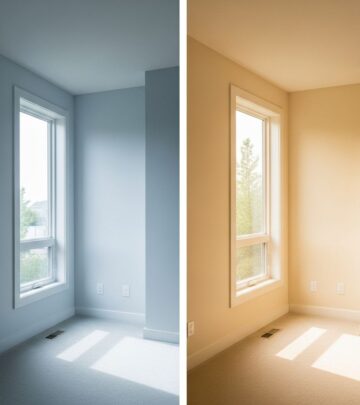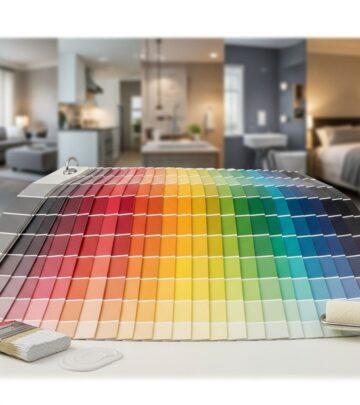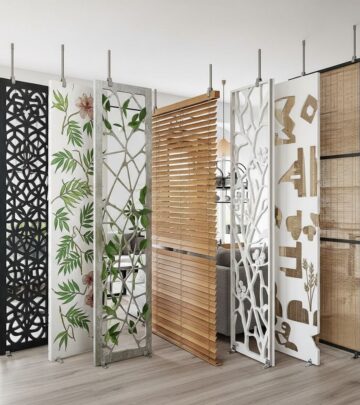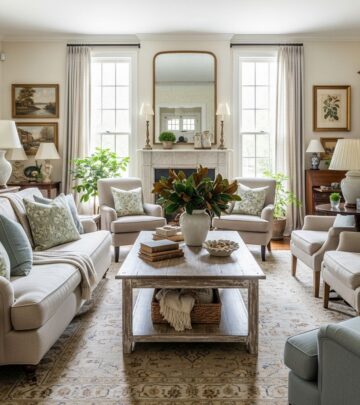Ceiling Lighting Ideas: 5 Essential Steps To Upgrade Fixtures
A DIY couple's journey through choosing, installing, and perfecting overhead lighting—tips, tricks, and lessons learned along the way.
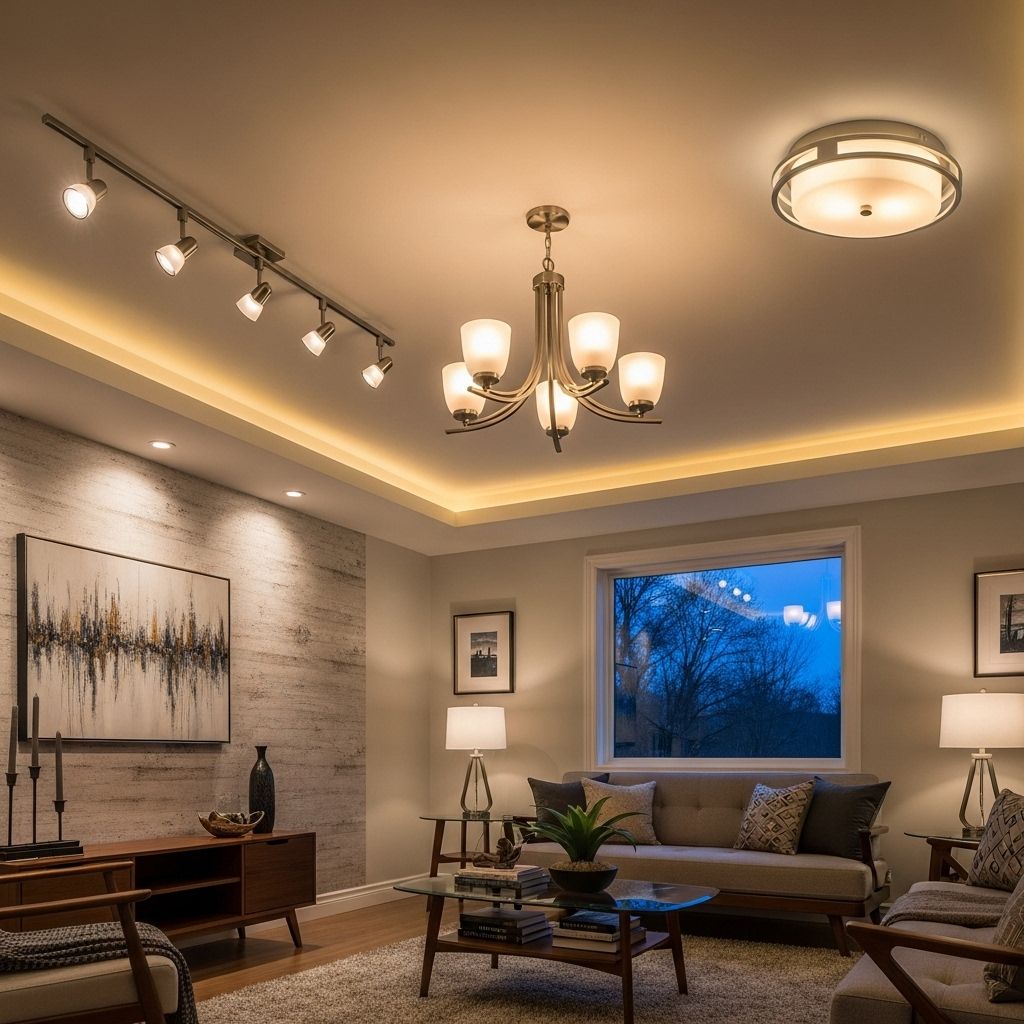
Image: HearthJunction Design Team
Lights, Ceiling, Action! The Overhead Lighting Transformation
When it comes to making a home feel refreshed, nothing delivers instant impact quite like new lighting. Our journey through updating our overhead fixtures offers practical lessons, design inspiration, and a few hard-earned installation tricks. Read on for a complete guide to transforming your ceilings and illuminating your style.
Why Overhead Lighting Matters
Ceiling lights are the unsung heroes of interior design. They provide crucial task lighting, establish ambiance, and act as statement pieces that reflect your home’s personality. Neglected, they can leave a space feeling dated or dim. With thoughtful selection and careful installation, however, overhead fixtures can truly crown each room.
The Existing Landscape: An Outdated Ceiling
Our adventure began with a house full of forgettable fixtures—builders’ grade flush mounts and mismatched pendants that didn’t suit our evolving style or needs. Most spaces suffered from poor illumination, and the designs felt more afterthought than feature. If you also walk through your house squinting at old domes or cringing at brassy eyesores, you know the feeling!
Scouting for New Lighting Solutions
Before making any purchases, we took these essential steps:
- Assessing function: What will the room be used for? Will we need bright task lighting, soft mood lights, or both?
- Measuring ceiling height: Some rooms had 8-foot ceilings, others only 7. Fixture drop and bulk mattered a lot—especially in walkways.
- Considering existing wiring: Rewiring the whole house wasn’t on the table, so we prioritized upgrades that could harness the current setup.
- Matching finishes: We aimed for consistency with metal finishes (brushed nickel, oil-rubbed bronze) to tie spaces together, complementing door hardware and other fixtures.
Design Decisions: Finding the Perfect Fixtures
Lighting is one of the best places to show off your style, but finding the right pieces takes some legwork!
- We browsed an array of pendant lights, flush mounts, and semi-flush mounts, comparing looks and light output.
- Budget was a real consideration—we wanted quality fixtures but not at the expense of our renovation fund. Splurging on a room-defining chandelier made sense in the main living area, while bedrooms and halls got stylish (but more modest) options.
- To ensure visual harmony, we looked for shapes and finishes that echoed other choices throughout the house.
After much deliberation, we placed our orders, excited for the transformation ahead.
Room-by-Room Lighting Upgrades
Each area of the house posed unique challenges and opportunities. Here’s how we tackled them.
Hallway: The Tri-Light Zone
The hallway originally featured a single, lonely fixture that left much of the corridor in shadow. We decided to illuminate the entire stretch by installing three matching pendant lights.
- Measured and marked the ceiling for equidistant placement, ensuring even light distribution.
- Chose lights that were visually striking but not so low as to impede movement (especially for taller guests).
- Used a smart trick: install fixtures with a longer chain or rod than needed, then gradually shorten for the perfect hang height. It’s far easier to take up slack than add it back later!
The results were stunning—bright, cohesive, and a major design statement. The new pendants tied in beautifully with our dark stair rail and matching hardware, elevating the entire passageway.
Master Bedroom: From Capiz to Wow-Factor
Bedrooms deserve more than a plain flush mount. We sourced a capiz shell chandelier, aiming for soft, ambient light that felt cozy yet modern.
- Installation over the bed meant the fixture could hang lower without risk of bumped heads.
- We avoided recessed lighting (which can feel cold and institutional in sleeping spaces) and opted for a fixture that casts beautiful, shadowy patterns on the ceiling for added interest.
- The chandelier’s natural materials brought warmth and texture—proof that lighting is as much about mood as illumination.
Kitchen: Pendant Perfection
The kitchen adventure was a little different. We needed:
- Three coordinated pendants above the island for ample prep lighting.
- A statement fixture over the dining area—one that could hold its own against cabinetry and appliances.
- Sufficient wattage for meal prep, but with dimmers for more intimate dinners.
Instead of settling for placeholders, we invested in quality fixtures we’d be happy to live with for years. The shape and finish of the pendants echoed hardware elsewhere in the kitchen, making the entire space feel intentional and unified.
The Installation Process: DIY Wins and Lessons Learned
Installing ceiling fixtures isn’t rocket science, but it does require careful prep and attention to safety. Here’s what we learned from swapping out a houseful of ceiling lights:
- Safety comes first: Always shut off the breaker before touching any wires.
- Document the old setup: Take a quick photo of the existing wiring before removal. This can be a lifesaver when reconnecting.
- Ceiling conditions matter: Old fixtures may use undersized-style boxes or quirky anchoring methods. Assess and upgrade to a proper electrical box if needed for safe support.
- Chain and rod adjustments: Hang the fixture lower than you think, then incrementally raise to achieve the perfect look and function.
- Patience is key: It takes time to measure, align, and install multiple fixtures. Factor in extra time if you’re taking progress photos or juggling calls—trust us!
Style Considerations: Making Your Lights Work for You
- Oversized fixtures as statements: Don’t be afraid to size up a bit—larger lights can add drama, especially in long hallways or open concept spaces.
- Finish coordination: Tie together different areas by echoing metal finishes and shapes across fixtures.
- Layering: Mix overhead, task, and accent lighting for spaces that feel balanced and functional throughout the day and night.
Frequently Asked Questions (FAQs)
Q: How do I choose the right size ceiling fixture?
A: Measure your room’s dimensions in feet, add them together (for example, a 10×12 foot room = 22), and use that number in inches as a guideline for your fixture’s diameter. Consider ceiling height—higher ceilings can accommodate larger or longer lights.
Q: What if my new fixture is heavier than the old one?
A: Use an appropriately rated ceiling electrical box anchored to a joist—the old style may not be up to code for heavy chandeliers or pendants.
Q: How important is it to coordinate lighting finishes throughout the house?
A: Coordination adds a layer of polish and cohesion. While some variety can be interesting, echoing similar tones or shapes unifies your design.
Q: Can I install a ceiling light myself?
A: Yes, if you’re comfortable following wiring instructions and basic safety protocols. If the wiring is complex or the box needs upgrading, consider calling an electrician.
Q: Why does my new fixture cast shadows or uneven light?
A: Fixture style, bulb placement, and shade type all affect light dispersion. Choose fixtures with adequate coverage or bulbs for your needs.
Our Favorite Tips for Successful Lighting Upgrades
- Always use a sturdy step ladder—don’t balance on chairs or tables!
- Use painter’s tape to mark fixture placement on the ceiling before drilling any holes.
- If your fixture has a chain, hang it lower at first, then raise it.
- Save your old hardware and canopy parts just in case—sometimes new fixtures may lack key mounting screws.
- Don’t rush! Triple-check your wiring and alignment before restoring power.
Design Recap: The Transformation in Photos
(If this were our personal blog, we’d share before-and-after shots of each space. For maximum impact, take your own photos to see just how much new ceiling fixtures can change a room’s mood and look!)
Conclusion: Bright Ideas for Every Home
Updating your home’s overhead lighting is more than just a cosmetic upgrade—it’s a way to improve functionality, safety, and style in one go. From grand foyers to cozy bedrooms, every space can benefit from thoughtful fixture selection and careful installation. Whether you’re a seasoned DIYer or just starting out, a lighting upgrade is an approachable project with high visual rewards. So grab your tools, study your options, and prepare for a home that truly shines!
Quick Reference Table: Lighting Upgrade Essentials
| Step | Key Action | Pro Tip |
|---|---|---|
| 1. Assess Space | Measure dimensions and ceiling height | Bigger rooms can handle larger fixtures |
| 2. Choose Fixture | Match style, finish, and function | Coordinate with existing hardware |
| 3. Prep Tools | Turn off breaker, gather supplies | Use a voltage tester for extra safety |
| 4. Install | Follow manufacturer’s instructions | Install with chain/rod longer at first, then adjust |
| 5. Test & Enjoy | Restore power and review placement | Snap photos for your own before/after satisfaction! |
References
Read full bio of Anjali Sayee


